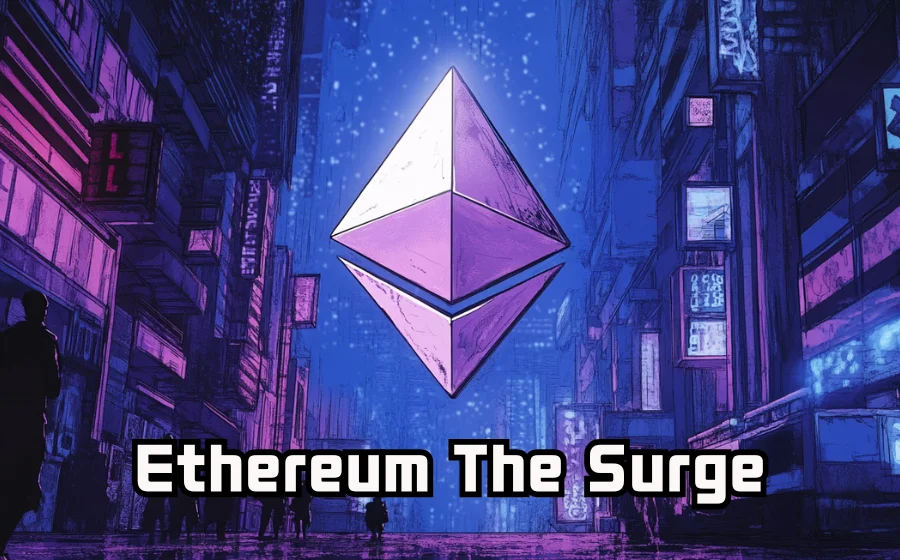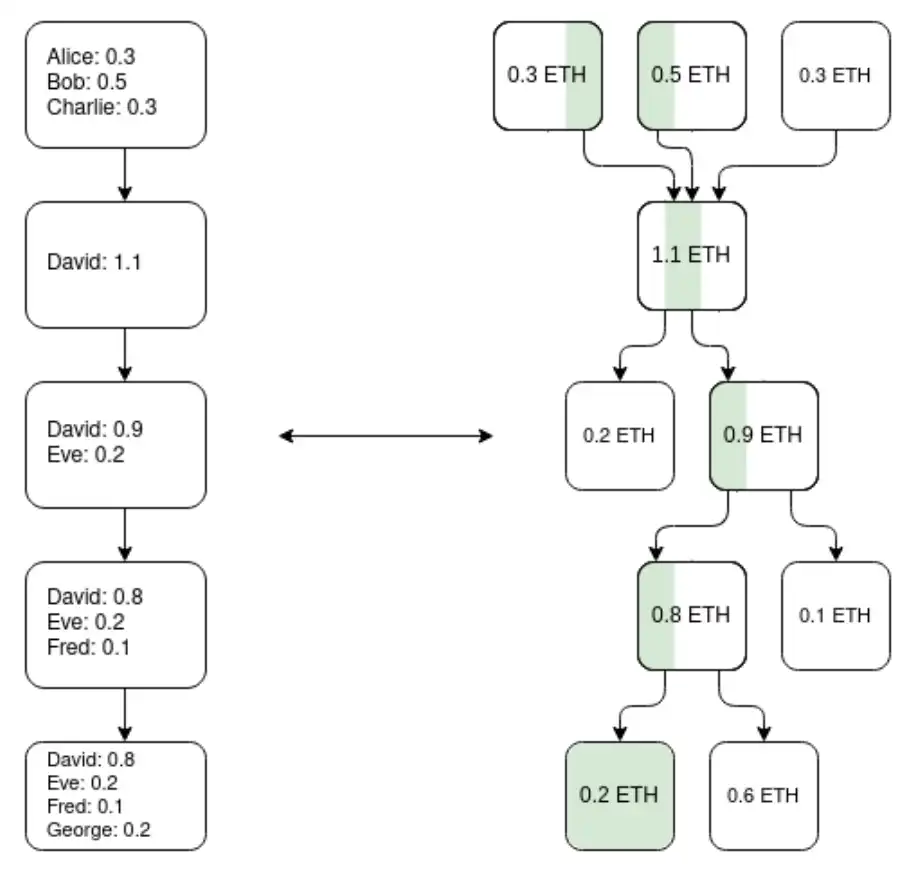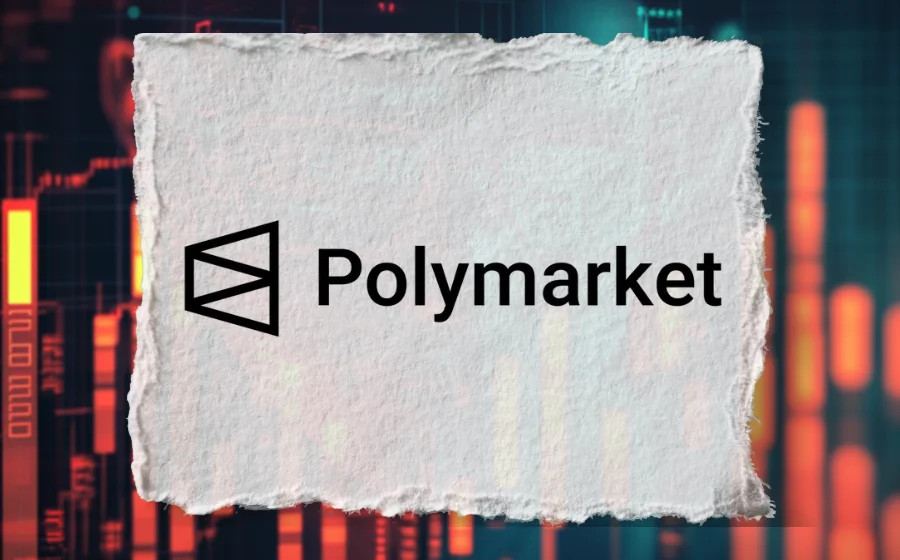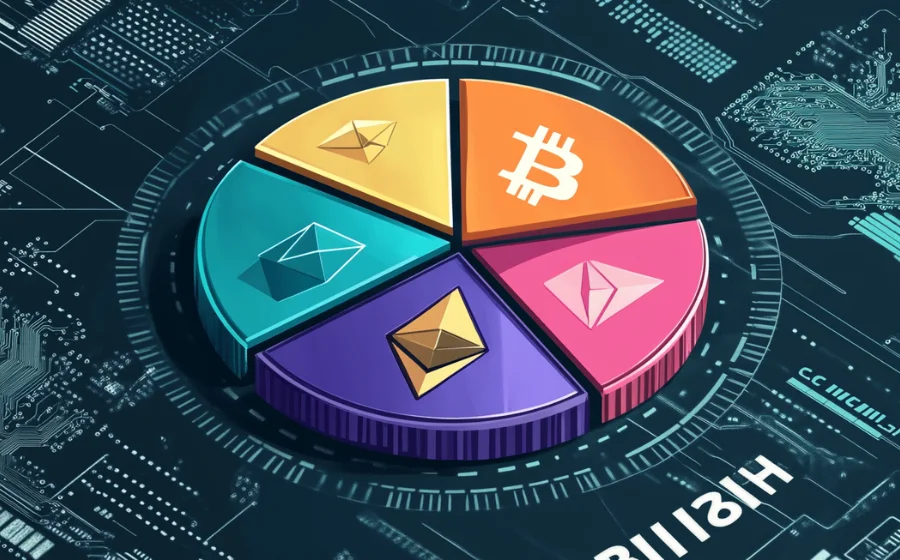
KEYTAKEAWAYS
- The Surge boosts Ethereum’s scalability to handle over 100,000 TPS, reducing network congestion and lowering transaction costs.
- Rollups and data availability upgrades drive faster dApp performance and seamless asset transfers across Layer 1 and Layer 2.
- Users benefit from lower gas fees and developers can build more complex dApps, fostering innovation and broader Ethereum adoption.

CONTENT
The Surge enhances Ethereum to surpass 100,000 TPS via Layer 2 rollups and data upgrades, reducing gas fees while boosting scalability and security for a more efficient blockchain future.
Ethereum’s next major upgrade – The Surge – aims to boost transaction processing capacity (TPS) to over 100,000 transactions per second through Layer 2 rollup solutions and data availability improvements.
This phase enhances scalability, significantly reduces gas fees, and maintains decentralization and security, laying a robust and efficient foundation for the future of blockchain.
As a pivotal milestone in Ethereum’s ongoing development roadmap, The Surge is designed to expand network scalability, ensuring seamless collaboration between Layer 1 and Layer 2.
Ultimately, it drives Ethereum closer to becoming the most scalable, efficient, and decentralized blockchain platform.
This article delves into how this upgrade advances Ethereum’s long-term vision.
>>> More to read: Is Bitcoin Reaching Its Peak in 2025?
WHAT IS THE SURGE?
The Surge represents Ethereum’s shift towards greater scalability, primarily achieved through Layer 2 (L2) solutions and rollup technology.
Introduced by Ethereum’s founder, Vitalik Buterin, in the Ethereum roadmap, The Surge aims to make the network faster and more efficient.
The core objective is to handle a significantly higher volume of transactions while maintaining decentralization, security, and interoperability.
Currently, Ethereum’s base layer processes around 15 to 30 transactions per second (TPS). While this meets the needs of many applications, network congestion during peak periods leads to higher gas fees.
The Surge is designed to address these bottlenecks, enhancing Ethereum’s capacity to support global applications.
KEY FEATURES OF THE SURGE
1. The Surge Roadmap

(Source: Vitalik Buterin)
-
100,000+ Transactions Per Second (TPS) on L1 and L2
The Surge leverages Layer 2 (L2) rollup solutions to enable Ethereum to handle over 100,000 transactions per second.
Rollups aggregate multiple transactions and submit them to the Ethereum mainnet, significantly increasing throughput while reducing gas fees and enhancing overall network efficiency.
-
Decentralization and Enhanced Security
The Surge ensures Ethereum remains decentralized, allowing users to run nodes with minimal resources.
By implementing advanced cryptographic proofs (such as SNARKs), Ethereum strengthens its trustless model, enhancing the security and transparency of transaction validation.
-
Data Availability Sampling (DAS) for Scalability
The Surge introduces Data Availability Sampling (DAS), which allows nodes to verify transactions without downloading the full block data.
This innovation improves processing efficiency, reduces node operational costs, and provides robust support for Layer 2 scaling solutions.
2. Ethereum’s Path to 100,000 TPS
Currently, Ethereum Layer 1 (L1) can process around 15 to 30 transactions per second. However, by integrating rollups and DAS, The Surge paves the way for the network to surpass 100,000 TPS.
Vitalik Buterin emphasizes that Ethereum should evolve into a unified ecosystem rather than a fragmented collection of blockchains.
This approach enhances cross-chain interoperability between L2 solutions, delivering a smoother user experience.
The Surge will enable seamless asset transfers across different layers, making it as simple as transferring ETH between wallets, reinforcing Ethereum’s position as the world’s leading blockchain platform.
>>> More to read: Cryptocurrency vs Virtual Currency | How to Distinguish Them?
THE SURGE TIMELINE
The Surge for Ethereum unfolds in multiple phases, focusing on continuous upgrades across Layer 1 (L1) and Layer 2 (L2).
Here is the projected timeline based on the latest updates and roadmap:
✎ Q1 2024 – Dencun Upgrade (Proto-Danksharding Launch)
- Introduction of Proto-Danksharding (EIP-4844), enhancing data availability through “blob” data. This lays the groundwork for further rollup scalability.
- Ethereum L2 solutions will begin leveraging improved data availability, enabling faster and cheaper transactions.
✎ 2024–2025 – Rollup Scaling and Proof Systems Maturation
- Rollups like Arbitrum, Optimism, and zkSync will undergo upgrades to enhance scalability.
- New cryptographic proofs (such as SNARKs) will strengthen the trustless nature of rollups.
- Data Availability Sampling (DAS) systems, including PeerDAS and 2D DAS, will expand scalability, supporting higher transaction throughput.
✎ Late 2025 – Gas Price Optimization and L1 Enhancements
- Introduction of Ethereum Object Format (EOF) to improve smart contract execution efficiency.
- Potential adoption of multidimensional gas pricing, distinguishing costs for computation, data, and storage.
- Rollup solutions may be directly integrated into the Ethereum protocol.
✎ 2026 and Beyond – Full Danksharding Rollout
- Transition from Proto-Danksharding to full Danksharding, partitioning Ethereum into multiple shards to further boost scalability.
- The goal is to achieve 100,000 TPS across the L1 and L2 ecosystem.
✎ Post-2026 – Ongoing Monitoring and Upgrades
- Introduction of advanced consensus mechanisms, including post-quantum cryptography, to ensure network security.
- Ethereum will continue to refine and integrate cross-L2 interoperability, enhancing user experience and seamless asset transfers.
This timeline reflects Ethereum’s phased approach to ensure stability and smooth adoption throughout the transition.
Each phase of The Surge builds upon the last, ultimately aiming to create a blockchain capable of supporting global applications while maintaining decentralization and security.
>>> More to read: What is Blockchain and How Does It Work?
KEY COMPONENTS AFFECTED BY THE SURGE
1. Layer 2 Rollup: The Core of The Surge

(Source: Vitalik Buterin)
Layer 2 rollup solutions are central to The Surge, driving Ethereum towards faster and more cost-effective transactions.
Rollups bundle multiple transactions off-chain (outside the Ethereum mainnet) and submit transaction summaries to the blockchain, significantly reducing mainnet load, increasing throughput, and lowering gas fees.
The two main types of rollups are:
- OP-rollup – Assumes all transactions are valid by default unless someone disputes them within a set time frame. This method does not require immediate verification of each transaction, resulting in faster processing speeds.
- ZK-rollup – Uses zero-knowledge proofs to instantly verify transaction validity through advanced mathematics. This method provides secure and immediate validation.
According to L2Beat, Ethereum’s L2 total value locked (TVL) has increased by 216% over the past year, surpassing $38 billion.
With more projects and users adopting rollups, The Surge will further drive Ethereum’s scalability and accessibility.
2. Data Availability Sampling (DAS)
Data Availability Sampling (DAS) plays a crucial role in helping Ethereum handle large amounts of data efficiently.
In decentralized networks like Ethereum, every node must verify the availability of all transaction data.
However, storing all data on each node is impractical. DAS solves this by allowing nodes to verify data without downloading and storing the entire dataset.
The main types of DAS are:
- PeerDAS – Uses a peer-to-peer network to distribute the workload. Each node verifies a small portion of the data, and the entire network collectively confirms the full dataset, improving efficiency without requiring significant storage.
- 2D DAS – An enhanced version of PeerDAS that not only verifies individual data fragments but also checks how these fragments fit together, further boosting scalability and ensuring decentralization and security.
DAS enables rollups to handle more transactions without overburdening the Ethereum network, ensuring fast, low-cost, and decentralized operations that align with Ethereum’s goal of scaling without sacrificing security.
3. Plasma and Data Compression Technologies

(Source: Vitalik Buterin)
In addition to rollups, Plasma and data compression technologies are vital for Ethereum’s scalability under The Surge.
- Plasma – Processes transactions off-chain and only submits summaries to the Ethereum mainnet, reducing the amount of data that must be stored and processed on-chain. This accelerates transaction speeds and lowers costs, similar to compiling multiple tasks into one report for efficiency.
- Data Compression – Reduces the amount of data required for transactions. For instance, Ethereum could switch from standard signatures to BLS signatures, allowing multiple signatures to be aggregated into one. This approach conserves block space and enhances efficiency, especially for high-throughput L2 systems.
These technologies lay the groundwork for The Surge, helping Ethereum reach its goal of 100,000 transactions per second, further expanding the blockchain ecosystem and improving user experience.
>>> More to read: What Are Gas Fees? How Do They Work?
THE IMPACT OF THE SURGE ON USERS AND DEVELOPERS
The Surge upgrade promises to make the Ethereum network more efficient and cost-effective, benefiting both regular users and developers.
While some of the technical details may seem complex, here’s a simple breakdown of how these changes will affect you:
1. Lower Gas Fees
One of the most noticeable improvements from The Surge will be lower gas fees, especially on Layer 2 (L2) networks like Arbitrum and Optimism.
- Current Fees: ETH transfer fees currently range from $0.24 to $0.78.
- Post-Surge: As scalability improves and data availability is optimized, transaction fees are expected to drop further, making ETH transfers and dApp interactions more affordable.
- User Impact: Lower gas fees mean users can make transactions more frequently without worrying about high costs during periods of network congestion, increasing the accessibility of Ethereum for everyday use.
2. Enhanced dApp Performance
Developers will benefit from faster transaction speeds, enabling them to build more complex and feature-rich dApps.
- Benefiting Areas: DeFi platforms, blockchain games, NFT marketplaces, and more.
- Advantages: Faster transactions will reduce latency, improve user satisfaction, and drive innovation across sectors like DeFi and blockchain gaming.
- Real-World Effect: dApps will respond faster, offering smoother interactions for users, which will encourage greater adoption and engagement in Web3 applications.
3. Improved Interoperability
The Surge will enhance interoperability between Ethereum’s mainnet and L2 networks, streamlining asset transfers and application interactions.
- Current Challenges: Moving assets between different L2s or the mainnet often requires complex cross-chain bridges, which can be costly and time-consuming.
- Future Changes: Transfers between L2s and the mainnet will become seamless, allowing users to interact with dApps and move assets as easily as if they were operating on a single network.
- Outcome: Ethereum will feel like a unified ecosystem, improving cross-layer interactions and reducing the need for third-party solutions, thus minimizing risks and costs.
The Surge will make Ethereum more user- and developer-friendly, fostering a thriving ecosystem for all participants. Whether you’re transferring assets, building applications, or exploring new projects, The Surge will deliver a faster, cheaper, and more convenient blockchain experience for the entire Ethereum community.
>>> More to read: DePIN: How It Transforms Traditional IoT Networks
THE SURGE CONCLUSION
The Surge marks a significant milestone in Ethereum’s journey to becoming a global decentralized platform.
By focusing on rollups, data availability, and Layer 1 improvements, Ethereum aims to handle over 100,000 transactions per second (TPS) while maintaining decentralization and security.
With these upgrades, users will benefit from faster transactions and lower fees, while developers can build more innovative dApps. However, rapid scalability also introduces risks.
Potential challenges include vulnerabilities in Layer 2 solutions, temporary network disruptions, and fluctuating gas fees during the transition. Both developers and users must stay informed and adapt as Ethereum evolves.
As The Surge unfolds, Ethereum lays the groundwork for a scalable, efficient, and secure blockchain future.
Yet, as with any major upgrade, careful monitoring and continuous adjustments will be crucial for long-term success. This is just the beginning of Ethereum’s ambitious path forward.


















